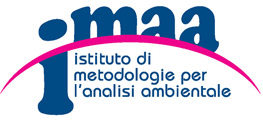Methodology
The project purposes are mainly oriented to support and facilitate advances in the knowledge and use of ICT and remote sensing technology for supporting a smart management of sites and cultural monuments which are particularly exposed to natural and human risks.
The adopted methodology is focused on the use of diagnostic technologies, ICT, in situ observation, satellite remote sensing, image-based landscape survey, ground geophysics integrated with other disciplines such as archeology, restoration, Geosciences Applied to Cultural Heritage, whose details are below described: A) remote sensing satellite analyses will be based on the use of both active (radar) and passive data, to monitor the effects of subsidence and deformation properties of the pilot sites, and for change detection monitoring and for obtaining detailed maps of any changes affecting the sites under investigation. B) geophysics prospecting will be aimed at the identification of features of archaeological interest. Moreover, surveys will also be useful to show geological settings of the site to estimate the risk; C) historical investigations on natural and/or man-made disasters; D) The diagnostic activities carried out in situ will enable to acquire information about: construction materials, decay status, deformation phenomena affecting the historical structures. E) ICT will be used for 3D restitution of anthropic landscape and for building virtual platforms for the online and offline visit of monuments and landscape.
This activity is aimed to: 1) improve the exploitation and use of cultural resources which are not easily accessible, 2) assess the impact of any modern infrastructure on the cultural landscape.
Activities and tasks listed at A and D will be coordinated by CNR researcher group, whereas the CAS researcher group will coordinate activities and tasks listed at B, C and E.







